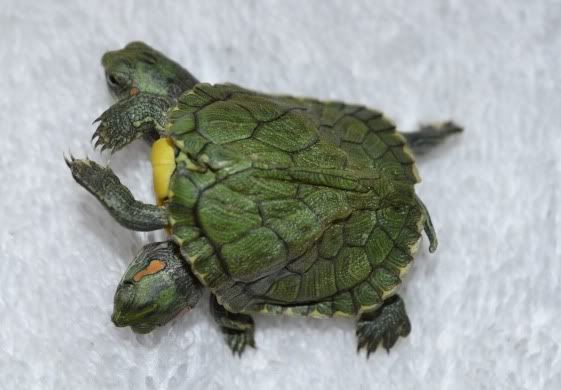I saw this posted for $500 on another site. I e-mailed an inquiry just out of curiousity with questions regarding the turtle's(turtles'?) mobility, eating habits, and coordination. I was told that the turtle swims, walks around, and eats just fine. I don't believe this turtle could actually swim and catch fish the way a normal one could. I'm also guessing that two separate sets of brain waves cause the turtle to move around in what appears to be 'spastic' type motions.
Personally, I would be leaning towards euthanizing the animal. I tend to believe that it will have a somewhat diminished quality of life, and I personally would not want to capitalize on it. I know the flipside of that is if the animal can exist, feed, and otherwise perform daily functions painfree; then an argument could be made that there really isn't any harm in allowing it to live. I just found the pic to be very disturbing and really felt sorry for the animal.
Thoughts?

Personally, I would be leaning towards euthanizing the animal. I tend to believe that it will have a somewhat diminished quality of life, and I personally would not want to capitalize on it. I know the flipside of that is if the animal can exist, feed, and otherwise perform daily functions painfree; then an argument could be made that there really isn't any harm in allowing it to live. I just found the pic to be very disturbing and really felt sorry for the animal.
Thoughts?
